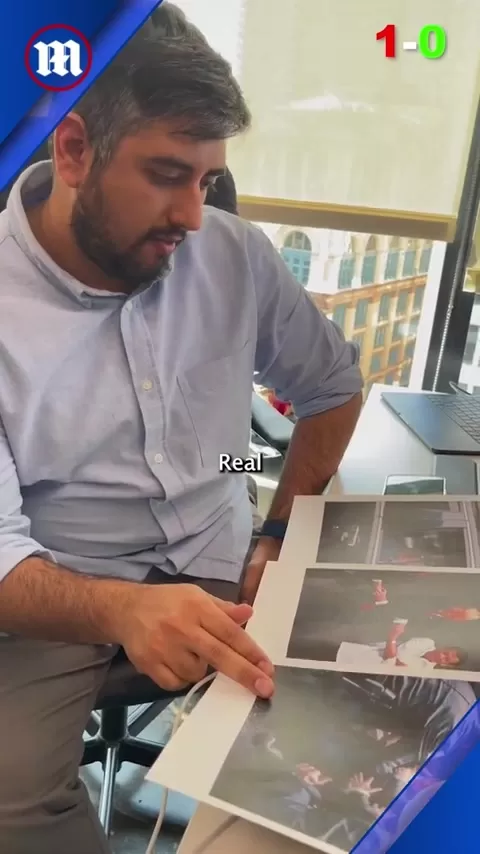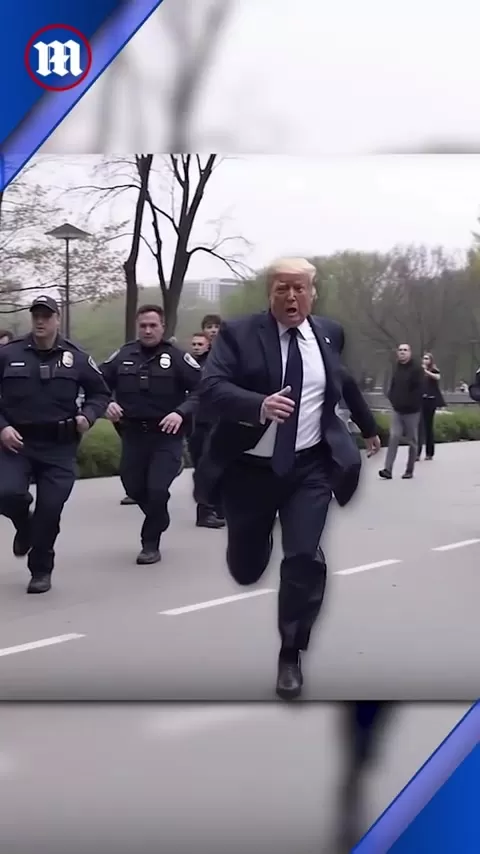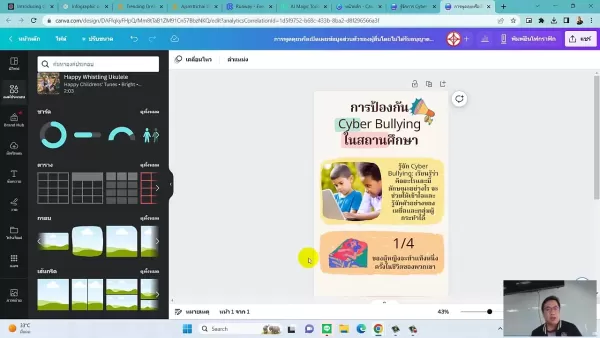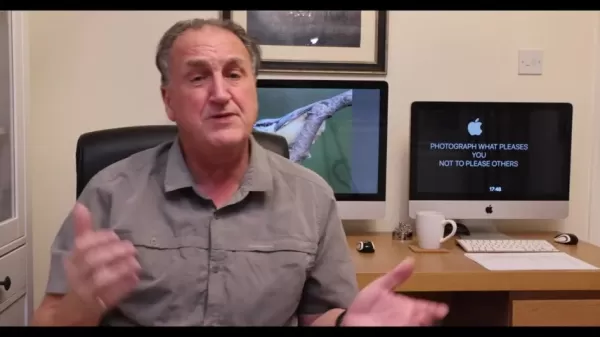AI-Generated Trump Arrest Photos: Real or Fake News?
In today's rapidly evolving digital landscape, artificial intelligence (AI) is pushing boundaries, making it increasingly challenging to distinguish between what's real and what's not. Recently, the internet was flooded with AI-generated images showing the arrest of former President Donald Trump, sparking confusion and heated debates. These incredibly realistic images, crafted with tools like Midjourney v5, have deceived many, showcasing the growing sophistication and potential risks of AI-generated content. This piece explores the realm of AI-generated images, the hurdles in identifying them, and the broader implications for news and information.
Key Points
- AI-generated images of Donald Trump's arrest have gone viral, sowing confusion.
- AI tools like Midjourney v5 are adept at producing hyperrealistic images.
- It's becoming harder to tell AI-generated images apart from real photos.
- The proliferation of AI-generated fake news threatens public trust and informed decision-making.
- Media literacy and critical thinking are vital in the era of AI-generated content.
- Understanding AI image creation tools and techniques can aid in spotting fakes.
The Rise of AI-Generated Fake News
The Power and Peril of AI Image Generation
AI technology has advanced at breakneck speed, ushering in an era where tools like Midjourney, DALL-E 2, and Stable Diffusion can create photorealistic images from mere text prompts. This capability is a double-edged sword; while it opens up a world of creative possibilities, it also fuels the creation and spread of AI-generated fake news.

The images of Donald Trump's supposed arrest, depicting him being apprehended, tackled, and even in prison, spread like wildfire across social media. These visuals tricked many into thinking they were genuine news photos, underscoring the potential for AI to manipulate public sentiment, spread misinformation, and undermine trust in traditional media.
Midjourney v5, the AI model behind many of these images, is particularly adept at creating hyperrealistic content. It can replicate human features and environments so convincingly that it's tough to spot the fakes. This level of sophistication challenges fact-checkers and media consumers to be more vigilant and critical.
The rapid spread of AI-generated fake news is alarming. Social media algorithms, designed to boost engagement, can inadvertently amplify misinformation. Once an AI-generated image or video goes viral, it's hard to stop its spread, even after being debunked. This highlights the urgent need for social media platforms to develop strategies to identify and label AI-generated content.
How to Spot AI-Generated Images: Tips and Techniques
Despite their sophistication, AI-generated images still have telltale signs. Here are some tips to help you identify them:
- Examine the details: AI often struggles with finer points like hands, fingers, and teeth. Look for any inconsistencies or distortions.
- Analyze the lighting and shadows: AI-generated images might show unnatural or inconsistent lighting and shadows. Check how light interacts with objects and surfaces.
- Check for background inconsistencies: AI may falter in creating coherent backgrounds. Look for anomalies or distortions in the background elements.
- Reverse image search: Use tools like Google Images or TinEye to see if the image has been identified as AI-generated or if it's found on sites known for AI content.
- Consult fact-checking organizations: Organizations like Snopes and PolitiFact are on the front lines debunking AI-generated fake news. Check their sites for information on the image in question.
- Consider the source: Be cautious of images from unknown or unreliable sources. Verify the source's credibility before sharing or believing the image.
Media literacy experts stress the importance of developing critical thinking skills to navigate the age of AI-generated content. They advise questioning the authenticity of images, verifying information from multiple sources, and being aware of potential manipulation. Understanding the tools and techniques used to create AI images can help in spotting them. For instance, knowing that AI often struggles with hands can prompt a closer look at these details when assessing an image's authenticity.

Case Study: The Donald Trump Arrest Images
A Closer Look at the AI-Generated Content
The AI-generated images of Donald Trump's arrest offer a fascinating case study in the challenges of identifying fake news. Created using Midjourney v5, these images showed Trump in various scenarios:
- Being apprehended by police officers
- Running from law enforcement
- Being tackled to the ground
- Wearing an orange jumpsuit in prison

These images were so lifelike that they fooled many social media users into believing they were real news photos. They sparked widespread debate, with reactions ranging from outrage to celebration over what some thought was a genuine event.
Upon closer inspection, however, subtle signs hinted at their AI origins, such as:
- Inconsistent lighting and shadows
- Distorted hands and fingers
- Unnatural facial expressions
- Anomalies in the background elements
The impact of these images was significant, with millions of views and heated debates online. They raised concerns about AI's potential to manipulate public opinion and spread misinformation. Although media outlets and fact-checkers quickly debunked the images, the initial damage was done, as many had already formed opinions based on the fake visuals, underscoring the difficulty of countering AI-generated fake news.
Expert Analysis: Identifying AI-Generated Images
Media literacy and AI experts have offered insights into identifying AI-generated images like those of Donald Trump's arrest:
- Context is crucial: Consider the context in which the image is shared. Is it from a reputable news source? Is the accompanying text accurate and unbiased?
- Be skeptical: Approach all images with skepticism. Don't assume an image is real just because it looks convincing.
- Verify, verify, verify: Always verify an image's authenticity before sharing or believing it. Use reverse image search tools, consult fact-checking organizations, and check with reputable news sources.
- Understand AI limitations: Be aware of AI's limitations in image generation. AI often struggles with fine details, so look for inconsistencies in these areas.
Social media platforms play a critical role in combating the spread of AI-generated fake news. They can:
- Develop algorithms to identify and flag AI-generated content.
- Partner with fact-checking organizations to debunk misinformation.
- Provide users with tools to report AI-generated fake news.
- Educate users about media literacy and critical thinking.
As AI technology continues to evolve, distinguishing AI-generated images and videos from real content will become even more challenging. This necessitates the development of media literacy skills, critical thinking abilities, and a healthy dose of skepticism to navigate this evolving landscape.
How to Protect Yourself from AI-Generated Fake News
Practical Steps for Media Consumers
In an era where AI-generated content can be incredibly convincing, taking proactive steps to protect yourself from fake news is essential. Here's a guide to help you navigate the digital landscape with greater awareness:
- Develop Critical Thinking Skills:
- Question Everything:
 Cultivate a habit of questioning the information you encounter online, especially on social media. Don't accept information at face value, regardless of how credible it may seem initially.
Cultivate a habit of questioning the information you encounter online, especially on social media. Don't accept information at face value, regardless of how credible it may seem initially. - Seek Multiple Perspectives: Always look for diverse viewpoints on any given topic. Relying on a single source can lead to a biased understanding of events.
- Verify Information from Reputable Sources:
- Check Fact-Checking Websites: Regularly consult fact-checking organizations such as Snopes, PolitiFact, and FactCheck.org to verify the accuracy of news stories and viral content.
- Cross-Reference News: Compare news reports from different established media outlets. Discrepancies can be a red flag indicating potential misinformation.
- Master Reverse Image Search Techniques:
- Use Tools Like Google Images and TinEye: If you come across a suspicious image, use reverse image search to trace its origin and see if it has been previously flagged as AI-generated or manipulated.
- Analyze Image Context: Examine the websites and social media accounts where the image appears. Look for any indications of alteration or fabrication.
- Scrutinize Social Media Accounts and Websites:
- Assess Source Credibility: Before sharing information from any source, research its history, mission, and reputation for accuracy.
- Beware of Biases: Recognize that some sources may have political or ideological biases. Consider these biases when evaluating the information they present.
- Recognize Signs of AI Generation:
- Inspect Fine Details: Pay close attention to hands, faces, and other intricate features. AI-generated images often contain anomalies, such as strangely shaped fingers or unnatural textures.
- Assess Lighting and Shadows: Analyze the lighting and shadows in the image. Inconsistencies or unnatural patterns can indicate AI manipulation.
- Promote Media Literacy in Your Community:
- Share Knowledge with Others: Educate your friends, family, and colleagues about media literacy and critical thinking skills.
- Encourage Active Engagement: Promote active engagement with news and information. Urge others to question, verify, and analyze before believing or sharing content.
AI-Generated Content: Weighing the Benefits and Risks
Pros
- Creative Potential: AI tools unlock new avenues for artistic expression and design, allowing users to create unique visuals.
- Efficiency in Content Creation: AI can significantly speed up the process of generating images and videos, which is useful for marketing, education, and entertainment.
- Accessibility for Non-Experts: Users without advanced skills can produce professional-quality visual content.
- Automation of Repetitive Tasks: AI can automate tedious tasks like generating product mockups or social media visuals.
Cons
- Misinformation and Fake News: The ease of creating fake images poses a serious threat to public trust and accurate information.
- Ethical Concerns: AI-generated content raises questions about authenticity, authorship, and consent.
- Job Displacement: AI automation may lead to job losses in creative industries.
- Bias and Representation: AI models can perpetuate existing biases if not trained on diverse datasets.
- Manipulation and Deception: AI-generated visuals can be used to manipulate public opinion and deceive individuals.
Frequently Asked Questions
What are AI-generated images?
AI-generated images are visuals created by artificial intelligence algorithms, often using tools like Midjourney, DALL-E 2, or Stable Diffusion. These algorithms can produce highly realistic or stylized images from text prompts or other input data.
How can I tell if an image is AI-generated?
Look for inconsistencies in details like hands, lighting, and background. Use reverse image search tools to check the image's origin and consult fact-checking websites for verifications.
What is Midjourney v5, and what makes it so powerful?
Midjourney v5 is an advanced AI model that excels at creating photorealistic images. Its sophistication makes it challenging to distinguish AI-generated images from real photos, requiring careful scrutiny.
What are the ethical concerns surrounding AI-generated content?
Ethical concerns include the potential for spreading misinformation, questions about authorship and consent, and the risk of job displacement in creative industries.
How do social media platforms contribute to the spread of AI-generated fake news?
Social media algorithms designed to amplify engagement can inadvertently promote misinformation. Platforms need to develop effective strategies to identify and label AI-generated content.
What can I do to protect myself from AI-generated fake news?
Develop critical thinking skills, verify information from reputable sources, use reverse image search techniques, and be skeptical of content from unknown sources.
Related Questions
What other AI tools are used for image generation?
Besides Midjourney, other popular AI image generation tools include DALL-E 2, Stable Diffusion, and various Adobe Creative Cloud features. Each tool has unique capabilities and strengths, but all share the potential to create convincing visual content. DALL-E 2 is known for its ability to create highly imaginative and surreal images from text prompts. Stable Diffusion offers a balance of quality and accessibility, making it a favorite among artists and hobbyists. Adobe Creative Cloud integrates AI-powered features like content-aware fill and style transfer to enhance photo editing and graphic design.
How are AI-generated images being used in marketing and advertising?
AI-generated images are increasingly used in marketing and advertising for creating product mockups, generating social media visuals, and producing personalized ad content. AI tools can quickly produce high-quality visuals tailored to specific campaigns, saving time and resources. However, ethical considerations must be addressed to ensure transparency and avoid misleading consumers.
What are the legal implications of using AI-generated images?
The legal implications of using AI-generated images are still evolving. Copyright issues, ownership rights, and liability for misinformation are key areas of concern. It is essential to understand the terms of service for AI tools and seek legal advice to ensure compliance with copyright laws and regulations.
- Legal Considerations:
- Copyright Ownership: Who owns the copyright to an AI-generated image – the user, the AI developer, or both?
- Terms of Service: Understanding the terms of service for AI tools is crucial for determining usage rights and limitations.
- Liability for Misinformation: Who is responsible if an AI-generated image is used to spread false or misleading information?
- Data Privacy: How is user data used to train and improve AI models, and what privacy protections are in place?
Related article
 Best AI Tools for Creating Educational Infographics – Design Tips & Techniques
In today's digitally-driven educational landscape, infographics have emerged as a transformative communication medium that converts complex information into visually appealing, easily understandable formats. AI technology is revolutionizing how educa
Best AI Tools for Creating Educational Infographics – Design Tips & Techniques
In today's digitally-driven educational landscape, infographics have emerged as a transformative communication medium that converts complex information into visually appealing, easily understandable formats. AI technology is revolutionizing how educa
 Topaz DeNoise AI: Best Noise Reduction Tool in 2025 – Full Guide
In the competitive world of digital photography, image clarity remains paramount. Photographers at all skill levels contend with digital noise that compromises otherwise excellent shots. Topaz DeNoise AI emerges as a cutting-edge solution, harnessing
Topaz DeNoise AI: Best Noise Reduction Tool in 2025 – Full Guide
In the competitive world of digital photography, image clarity remains paramount. Photographers at all skill levels contend with digital noise that compromises otherwise excellent shots. Topaz DeNoise AI emerges as a cutting-edge solution, harnessing
 Master Emerald Kaizo Nuzlocke: Ultimate Survival & Strategy Guide
Emerald Kaizo stands as one of the most formidable Pokémon ROM hacks ever conceived. While attempting a Nuzlocke run exponentially increases the challenge, victory remains achievable through meticulous planning and strategic execution. This definitiv
Comments (2)
0/200
Master Emerald Kaizo Nuzlocke: Ultimate Survival & Strategy Guide
Emerald Kaizo stands as one of the most formidable Pokémon ROM hacks ever conceived. While attempting a Nuzlocke run exponentially increases the challenge, victory remains achievable through meticulous planning and strategic execution. This definitiv
Comments (2)
0/200
![CarlLewis]() CarlLewis
CarlLewis
 August 12, 2025 at 9:00:59 AM EDT
August 12, 2025 at 9:00:59 AM EDT
Those AI-generated Trump arrest photos are wild! 😳 It’s scary how real they look—makes you wonder what else we’re seeing online that’s fake. Gotta double-check everything now!


 0
0
![PeterMartinez]() PeterMartinez
PeterMartinez
 August 6, 2025 at 7:00:59 AM EDT
August 6, 2025 at 7:00:59 AM EDT
Those AI-generated Trump arrest photos are wild! 😲 It's kinda scary how real they look—makes you wonder what else AI can fake. Gotta double-check everything online now!


 0
0
In today's rapidly evolving digital landscape, artificial intelligence (AI) is pushing boundaries, making it increasingly challenging to distinguish between what's real and what's not. Recently, the internet was flooded with AI-generated images showing the arrest of former President Donald Trump, sparking confusion and heated debates. These incredibly realistic images, crafted with tools like Midjourney v5, have deceived many, showcasing the growing sophistication and potential risks of AI-generated content. This piece explores the realm of AI-generated images, the hurdles in identifying them, and the broader implications for news and information.
Key Points
- AI-generated images of Donald Trump's arrest have gone viral, sowing confusion.
- AI tools like Midjourney v5 are adept at producing hyperrealistic images.
- It's becoming harder to tell AI-generated images apart from real photos.
- The proliferation of AI-generated fake news threatens public trust and informed decision-making.
- Media literacy and critical thinking are vital in the era of AI-generated content.
- Understanding AI image creation tools and techniques can aid in spotting fakes.
The Rise of AI-Generated Fake News
The Power and Peril of AI Image Generation
AI technology has advanced at breakneck speed, ushering in an era where tools like Midjourney, DALL-E 2, and Stable Diffusion can create photorealistic images from mere text prompts. This capability is a double-edged sword; while it opens up a world of creative possibilities, it also fuels the creation and spread of AI-generated fake news.

The images of Donald Trump's supposed arrest, depicting him being apprehended, tackled, and even in prison, spread like wildfire across social media. These visuals tricked many into thinking they were genuine news photos, underscoring the potential for AI to manipulate public sentiment, spread misinformation, and undermine trust in traditional media.
Midjourney v5, the AI model behind many of these images, is particularly adept at creating hyperrealistic content. It can replicate human features and environments so convincingly that it's tough to spot the fakes. This level of sophistication challenges fact-checkers and media consumers to be more vigilant and critical.
The rapid spread of AI-generated fake news is alarming. Social media algorithms, designed to boost engagement, can inadvertently amplify misinformation. Once an AI-generated image or video goes viral, it's hard to stop its spread, even after being debunked. This highlights the urgent need for social media platforms to develop strategies to identify and label AI-generated content.
How to Spot AI-Generated Images: Tips and Techniques
Despite their sophistication, AI-generated images still have telltale signs. Here are some tips to help you identify them:
- Examine the details: AI often struggles with finer points like hands, fingers, and teeth. Look for any inconsistencies or distortions.
- Analyze the lighting and shadows: AI-generated images might show unnatural or inconsistent lighting and shadows. Check how light interacts with objects and surfaces.
- Check for background inconsistencies: AI may falter in creating coherent backgrounds. Look for anomalies or distortions in the background elements.
- Reverse image search: Use tools like Google Images or TinEye to see if the image has been identified as AI-generated or if it's found on sites known for AI content.
- Consult fact-checking organizations: Organizations like Snopes and PolitiFact are on the front lines debunking AI-generated fake news. Check their sites for information on the image in question.
- Consider the source: Be cautious of images from unknown or unreliable sources. Verify the source's credibility before sharing or believing the image.
Media literacy experts stress the importance of developing critical thinking skills to navigate the age of AI-generated content. They advise questioning the authenticity of images, verifying information from multiple sources, and being aware of potential manipulation. Understanding the tools and techniques used to create AI images can help in spotting them. For instance, knowing that AI often struggles with hands can prompt a closer look at these details when assessing an image's authenticity.

Case Study: The Donald Trump Arrest Images
A Closer Look at the AI-Generated Content
The AI-generated images of Donald Trump's arrest offer a fascinating case study in the challenges of identifying fake news. Created using Midjourney v5, these images showed Trump in various scenarios:
- Being apprehended by police officers
- Running from law enforcement
- Being tackled to the ground
- Wearing an orange jumpsuit in prison

These images were so lifelike that they fooled many social media users into believing they were real news photos. They sparked widespread debate, with reactions ranging from outrage to celebration over what some thought was a genuine event.
Upon closer inspection, however, subtle signs hinted at their AI origins, such as:
- Inconsistent lighting and shadows
- Distorted hands and fingers
- Unnatural facial expressions
- Anomalies in the background elements
The impact of these images was significant, with millions of views and heated debates online. They raised concerns about AI's potential to manipulate public opinion and spread misinformation. Although media outlets and fact-checkers quickly debunked the images, the initial damage was done, as many had already formed opinions based on the fake visuals, underscoring the difficulty of countering AI-generated fake news.
Expert Analysis: Identifying AI-Generated Images
Media literacy and AI experts have offered insights into identifying AI-generated images like those of Donald Trump's arrest:
- Context is crucial: Consider the context in which the image is shared. Is it from a reputable news source? Is the accompanying text accurate and unbiased?
- Be skeptical: Approach all images with skepticism. Don't assume an image is real just because it looks convincing.
- Verify, verify, verify: Always verify an image's authenticity before sharing or believing it. Use reverse image search tools, consult fact-checking organizations, and check with reputable news sources.
- Understand AI limitations: Be aware of AI's limitations in image generation. AI often struggles with fine details, so look for inconsistencies in these areas.
Social media platforms play a critical role in combating the spread of AI-generated fake news. They can:
- Develop algorithms to identify and flag AI-generated content.
- Partner with fact-checking organizations to debunk misinformation.
- Provide users with tools to report AI-generated fake news.
- Educate users about media literacy and critical thinking.
As AI technology continues to evolve, distinguishing AI-generated images and videos from real content will become even more challenging. This necessitates the development of media literacy skills, critical thinking abilities, and a healthy dose of skepticism to navigate this evolving landscape.
How to Protect Yourself from AI-Generated Fake News
Practical Steps for Media Consumers
In an era where AI-generated content can be incredibly convincing, taking proactive steps to protect yourself from fake news is essential. Here's a guide to help you navigate the digital landscape with greater awareness:
- Develop Critical Thinking Skills:
- Question Everything:
 Cultivate a habit of questioning the information you encounter online, especially on social media. Don't accept information at face value, regardless of how credible it may seem initially.
Cultivate a habit of questioning the information you encounter online, especially on social media. Don't accept information at face value, regardless of how credible it may seem initially. - Seek Multiple Perspectives: Always look for diverse viewpoints on any given topic. Relying on a single source can lead to a biased understanding of events.
- Question Everything:
- Verify Information from Reputable Sources:
- Check Fact-Checking Websites: Regularly consult fact-checking organizations such as Snopes, PolitiFact, and FactCheck.org to verify the accuracy of news stories and viral content.
- Cross-Reference News: Compare news reports from different established media outlets. Discrepancies can be a red flag indicating potential misinformation.
- Master Reverse Image Search Techniques:
- Use Tools Like Google Images and TinEye: If you come across a suspicious image, use reverse image search to trace its origin and see if it has been previously flagged as AI-generated or manipulated.
- Analyze Image Context: Examine the websites and social media accounts where the image appears. Look for any indications of alteration or fabrication.
- Scrutinize Social Media Accounts and Websites:
- Assess Source Credibility: Before sharing information from any source, research its history, mission, and reputation for accuracy.
- Beware of Biases: Recognize that some sources may have political or ideological biases. Consider these biases when evaluating the information they present.
- Recognize Signs of AI Generation:
- Inspect Fine Details: Pay close attention to hands, faces, and other intricate features. AI-generated images often contain anomalies, such as strangely shaped fingers or unnatural textures.
- Assess Lighting and Shadows: Analyze the lighting and shadows in the image. Inconsistencies or unnatural patterns can indicate AI manipulation.
- Promote Media Literacy in Your Community:
- Share Knowledge with Others: Educate your friends, family, and colleagues about media literacy and critical thinking skills.
- Encourage Active Engagement: Promote active engagement with news and information. Urge others to question, verify, and analyze before believing or sharing content.
AI-Generated Content: Weighing the Benefits and Risks
Pros
- Creative Potential: AI tools unlock new avenues for artistic expression and design, allowing users to create unique visuals.
- Efficiency in Content Creation: AI can significantly speed up the process of generating images and videos, which is useful for marketing, education, and entertainment.
- Accessibility for Non-Experts: Users without advanced skills can produce professional-quality visual content.
- Automation of Repetitive Tasks: AI can automate tedious tasks like generating product mockups or social media visuals.
Cons
- Misinformation and Fake News: The ease of creating fake images poses a serious threat to public trust and accurate information.
- Ethical Concerns: AI-generated content raises questions about authenticity, authorship, and consent.
- Job Displacement: AI automation may lead to job losses in creative industries.
- Bias and Representation: AI models can perpetuate existing biases if not trained on diverse datasets.
- Manipulation and Deception: AI-generated visuals can be used to manipulate public opinion and deceive individuals.
Frequently Asked Questions
What are AI-generated images?
AI-generated images are visuals created by artificial intelligence algorithms, often using tools like Midjourney, DALL-E 2, or Stable Diffusion. These algorithms can produce highly realistic or stylized images from text prompts or other input data.
How can I tell if an image is AI-generated?
Look for inconsistencies in details like hands, lighting, and background. Use reverse image search tools to check the image's origin and consult fact-checking websites for verifications.
What is Midjourney v5, and what makes it so powerful?
Midjourney v5 is an advanced AI model that excels at creating photorealistic images. Its sophistication makes it challenging to distinguish AI-generated images from real photos, requiring careful scrutiny.
What are the ethical concerns surrounding AI-generated content?
Ethical concerns include the potential for spreading misinformation, questions about authorship and consent, and the risk of job displacement in creative industries.
How do social media platforms contribute to the spread of AI-generated fake news?
Social media algorithms designed to amplify engagement can inadvertently promote misinformation. Platforms need to develop effective strategies to identify and label AI-generated content.
What can I do to protect myself from AI-generated fake news?
Develop critical thinking skills, verify information from reputable sources, use reverse image search techniques, and be skeptical of content from unknown sources.
Related Questions
What other AI tools are used for image generation?
Besides Midjourney, other popular AI image generation tools include DALL-E 2, Stable Diffusion, and various Adobe Creative Cloud features. Each tool has unique capabilities and strengths, but all share the potential to create convincing visual content. DALL-E 2 is known for its ability to create highly imaginative and surreal images from text prompts. Stable Diffusion offers a balance of quality and accessibility, making it a favorite among artists and hobbyists. Adobe Creative Cloud integrates AI-powered features like content-aware fill and style transfer to enhance photo editing and graphic design.
How are AI-generated images being used in marketing and advertising?
AI-generated images are increasingly used in marketing and advertising for creating product mockups, generating social media visuals, and producing personalized ad content. AI tools can quickly produce high-quality visuals tailored to specific campaigns, saving time and resources. However, ethical considerations must be addressed to ensure transparency and avoid misleading consumers.
What are the legal implications of using AI-generated images?
The legal implications of using AI-generated images are still evolving. Copyright issues, ownership rights, and liability for misinformation are key areas of concern. It is essential to understand the terms of service for AI tools and seek legal advice to ensure compliance with copyright laws and regulations.
- Legal Considerations:
- Copyright Ownership: Who owns the copyright to an AI-generated image – the user, the AI developer, or both?
- Terms of Service: Understanding the terms of service for AI tools is crucial for determining usage rights and limitations.
- Liability for Misinformation: Who is responsible if an AI-generated image is used to spread false or misleading information?
- Data Privacy: How is user data used to train and improve AI models, and what privacy protections are in place?
 Best AI Tools for Creating Educational Infographics – Design Tips & Techniques
In today's digitally-driven educational landscape, infographics have emerged as a transformative communication medium that converts complex information into visually appealing, easily understandable formats. AI technology is revolutionizing how educa
Best AI Tools for Creating Educational Infographics – Design Tips & Techniques
In today's digitally-driven educational landscape, infographics have emerged as a transformative communication medium that converts complex information into visually appealing, easily understandable formats. AI technology is revolutionizing how educa
 Topaz DeNoise AI: Best Noise Reduction Tool in 2025 – Full Guide
In the competitive world of digital photography, image clarity remains paramount. Photographers at all skill levels contend with digital noise that compromises otherwise excellent shots. Topaz DeNoise AI emerges as a cutting-edge solution, harnessing
Topaz DeNoise AI: Best Noise Reduction Tool in 2025 – Full Guide
In the competitive world of digital photography, image clarity remains paramount. Photographers at all skill levels contend with digital noise that compromises otherwise excellent shots. Topaz DeNoise AI emerges as a cutting-edge solution, harnessing
 Master Emerald Kaizo Nuzlocke: Ultimate Survival & Strategy Guide
Emerald Kaizo stands as one of the most formidable Pokémon ROM hacks ever conceived. While attempting a Nuzlocke run exponentially increases the challenge, victory remains achievable through meticulous planning and strategic execution. This definitiv
Master Emerald Kaizo Nuzlocke: Ultimate Survival & Strategy Guide
Emerald Kaizo stands as one of the most formidable Pokémon ROM hacks ever conceived. While attempting a Nuzlocke run exponentially increases the challenge, victory remains achievable through meticulous planning and strategic execution. This definitiv
 August 12, 2025 at 9:00:59 AM EDT
August 12, 2025 at 9:00:59 AM EDT
Those AI-generated Trump arrest photos are wild! 😳 It’s scary how real they look—makes you wonder what else we’re seeing online that’s fake. Gotta double-check everything now!


 0
0
 August 6, 2025 at 7:00:59 AM EDT
August 6, 2025 at 7:00:59 AM EDT
Those AI-generated Trump arrest photos are wild! 😲 It's kinda scary how real they look—makes you wonder what else AI can fake. Gotta double-check everything online now!


 0
0





























